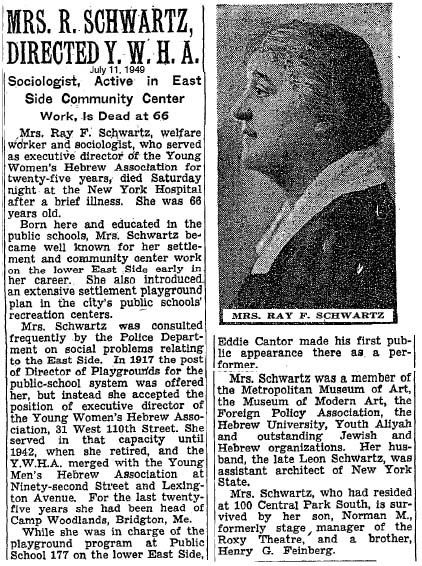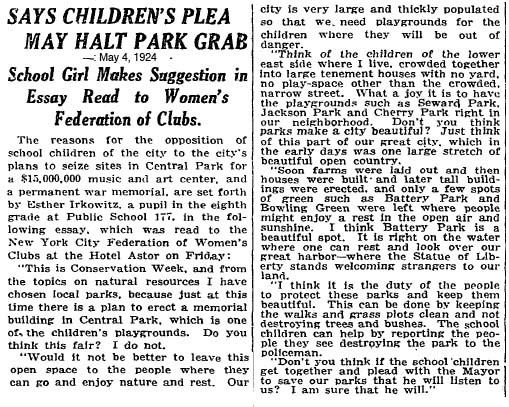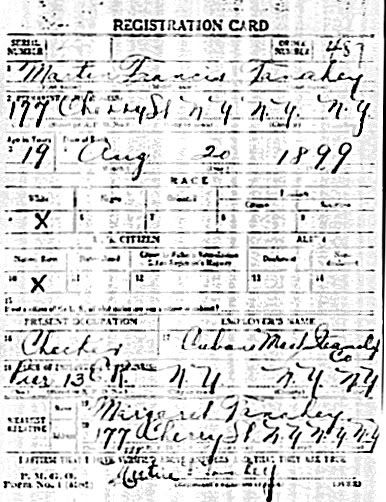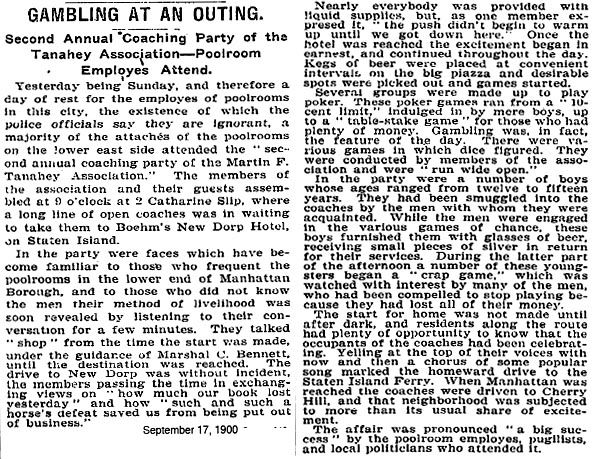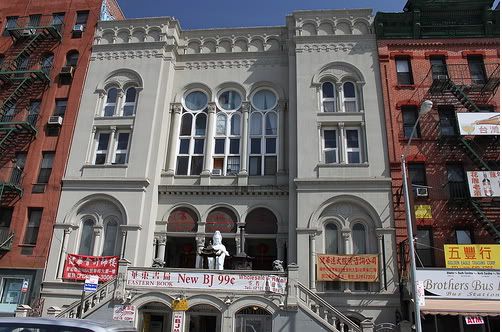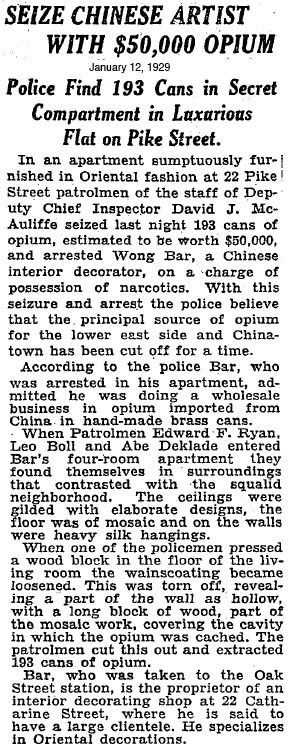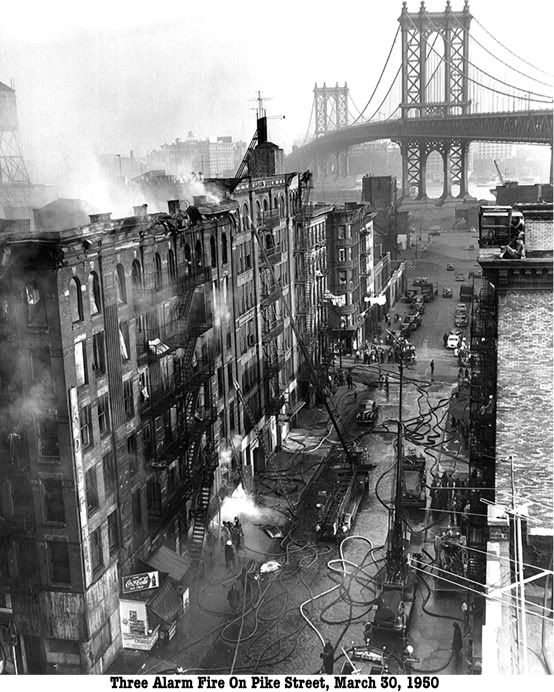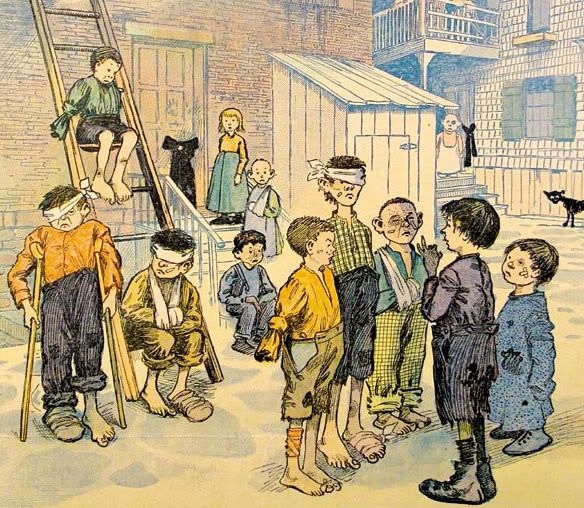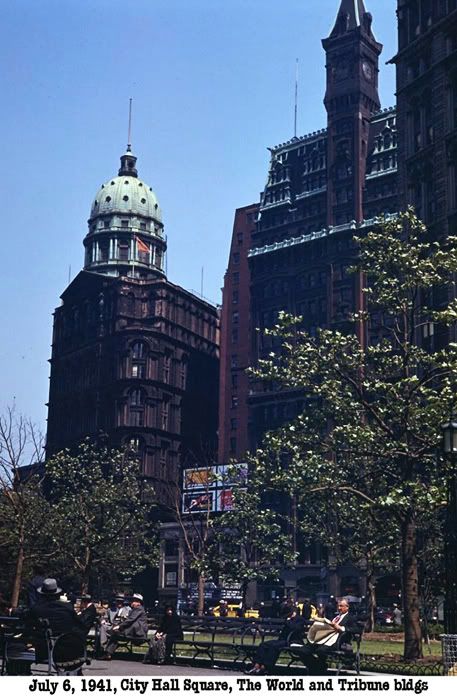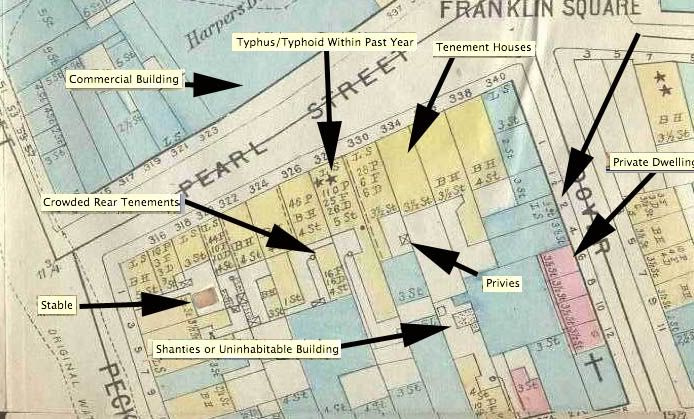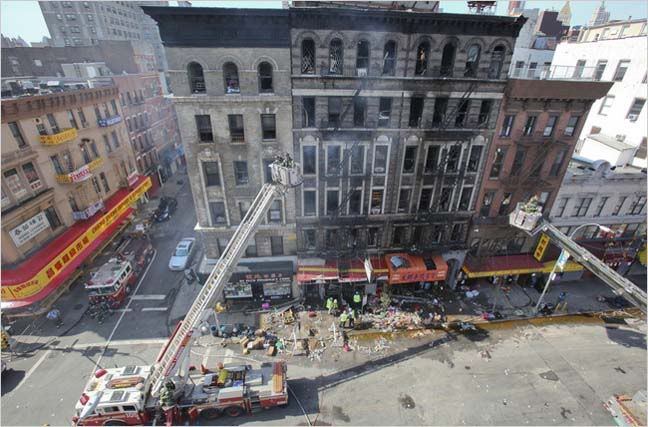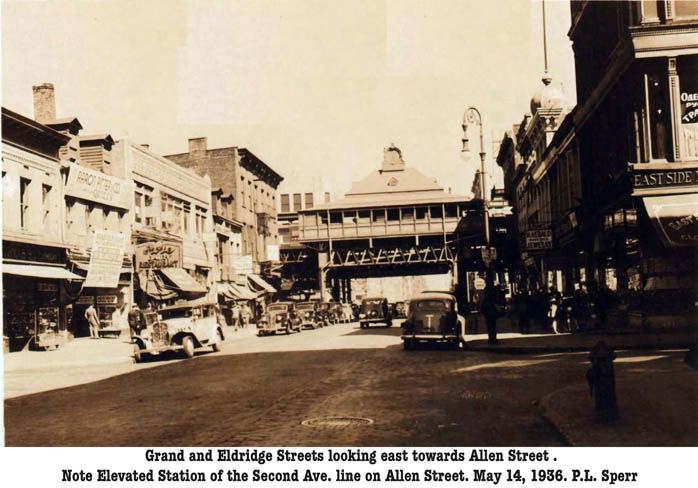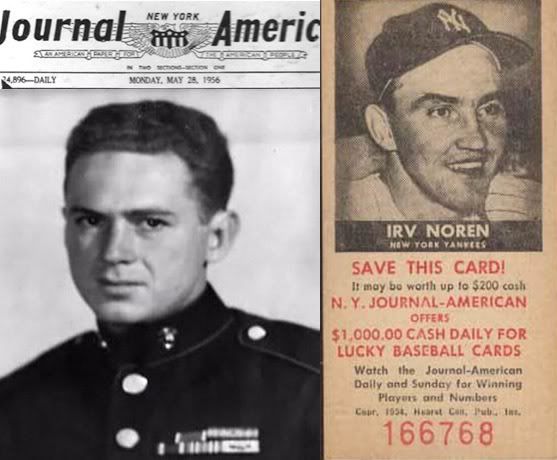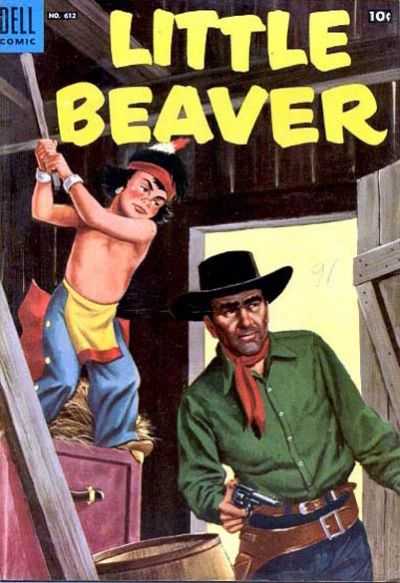Thursday, April 29, 2010
Get Me To The Church On Time 5
I had some church/synagogue images that I had forgotten to include in this now 5 part series. And to think this crazy obsession with this song started with Ike Davis' arrival at Citifield.
Wednesday, April 28, 2010
From Rags To Riches
Dedicated to those KV Mets fans
Rags To Riches, Tony Bennett, Written by Richard Adler and Jerry Ross
Charted at # 1 in 1953
Rags To Riches, Tony Bennett, Written by Richard Adler and Jerry Ross
Charted at # 1 in 1953
I know I'd go from rags to riches
If you would only say you care
And though my pocket may be empty
I'd be a millionaire
My clothes may still be torn and tattered
But in my heart I'd be a king
Your love is all that ever mattered
It's everything
So open your arms and you'll open the door
To ev'ry treasure that I'm hopin' for
Hold me and kiss me and tell me you're mine ever more
Must I forever be a beggar
Whose golden dreams will not come true?
Or will I go from rags to riches?
My fate is up to you
Must I forever be a beggar
Whose golden dreams will not come true?
Or will I go from rags to riches?
My fate is up to you
Tuesday, April 27, 2010
As Mother's Day Approaches
The unofficial KV Matriarch....Marion Fox
Personalize funny videos and birthday eCards at JibJab!
Martin Tanahey: World War I Draft Card
This must have been the son of the park's namesake. He was born in 1899 and lived at 177 Cherry Street in 1918. He worked as a cigar checker, I think, at Pier 13. Maybe it had to do with custom's inspection. Our own Joe Bruno remembers him and said he was a real nice guy. If I recall the story Joe might have said he worked at the Journal American.
September 17, 1900: Second Annual Coaching Party Of The Martin Tanahey Association
The other week I received an anonymous comment criticizing my opinion about Martin Tanahey in a 2007 post.
Anonymous wrote:
Anonymous wrote:
How did the "blog author" come to the conclusion that a person who died in 1930 at a relatively young age did not contribute anything of value to his community or to those he served? He obviously was not available to have any influence over the naming of the Tanahey park in his honor.I replied
FYI he was a most honorable man who worked hard for his family and neighbors whom he represented.
It seems petty for you to disparage him for your own purposes.
I didn't mean to disparage Martin Tanahey. I'm sure he was an honorable man. However there were many honorable people who parks are not named after. I've not found any information that leads me to believe he did anything remarkable as compared to Joseph Coleman.As a result I did more research to try and find out more about Martin Tanahey. More to come
Get Me To The Church On Time, Sinatra
From an Amazon reviewer
Sinatra singing superb in Concert at The Sands with Count Basie And THE Orchestra arranged and conducted by no less than Quincy Jones and it really doesn't get better than this! Opening with a hot sounding Basie band, Frank smoothly launches into a superb "Come Fly With Me", then an engaging and fun "I've Got A Crush On You" and onto a killer version of "I've Got You Under My Skin" that finds Frank at his sophisicated and soulful best!!! Torch time is sublime with a richly sung "The Shadow Of Your Smile" then to a riveting "Street Of Dreams" that shows why Sinatra is King!! Four A.M. in a saloon and the master serves a classic "One For My Baby (And One More For The Road) and the audience goes crazy for this masterpiece!!! Sinatra is incredible throughout this legendary event and swings "Fly Me To The Moon (In Other Words) like it was never swung before and you can feel the excitement from the audience and the great time they were having. Mr. Sinatra's fun monologues were thankfully left in and what special moments these are that never grow tired taking us back to another time and space in a very special way...Frank does a routine that is fun and funny about his friends Dean and Sammy that are priceless...Frank had just turned 50 and gives a personal view that is revealing and highly entertaining flowing into the definitive version of "You Make Me Feel So Young" that is so brilliantly sung showing the master at his absolute peak in magnificent voice!!! Basie does a gorgeous "All Of Me" then Frank returns with a hauntingly brilliant "The September Of My Years" that is amazing. A hot cooker "Get Me To The Church On Time" is another amazing vocal as is the stunning "It Was A Very Good Year". Frank Sinatra is so great in this concert making this event the male equilivant of "Judy At Carniege Hall" which is the other legendary concert album from the great musical sixties! "Don't Worry 'Bout Me" is another masterpiece in a remarkable collection which finds Frank so loose and soulful and it is clear that the audience is having a great time and so will you! Basie does a mesmerizing "Makin' Whoopee!" then Sinatra returns and nails classics such as the swinging "Where Or When", a haunting "Angel Eyes", and a soulfully sung "My Kind Of Town" which all show the master at his captivating best! This musical journey is the greatest concert performance released in Frank Sinatra's long and brilliant career..BRAVO Frank and we miss you!!! This masterpiece is highly recommended for anyone who enjoys vocal artistry at its peak in a live concert setting...
Pike Street Synagogue (Congregation Sons of Israel)
photo credit to Emilio Guerra
an excerpt From the 1997 NYCLPC Landmark Designation Report
an excerpt From the 1997 NYCLPC Landmark Designation Report
The Pike Street Synagogue, constructed in 1903-04 for the Congregation Sons of Israel Kalwarie, is a rare surviving synagogue building from that period of New York's history when the Lower East Side served as America's main portal for millions of Jewish immigrants. Designed by the architect Alfred E. Badt, this limestone-fronted building with its twin, lateral staircases up to the porticoed main entrance, and double stair towers projecting from the main facade creates an imposing presence on the crowded street. The basic form and massing of the building followed a stylistic precedent deriving from the Romanesque Revival and the German
At the same time, the architect included details which relate to the general classicizing tendencies in American architecture of the turn of the century. When constructed, this synagogue was one of the largest on the Lower East Side, and one of the few built specifically for this purpose. The Congregation Sons of Israel Kalwarie, started in 1853, continued to worship in this building until the 1980s. The building stood vacant for several years, but recently has been rehabilitated for a variety of uses with a Buddhist temple on the main level, apartments above, and commercial space on the ground floor.
The Jewish Community in New York
The first Jews arrived in the Dutch colony of Nieuw Amsterdam in 1654, coming from Brazil in an unsuccessful attempt to reach Holland. Although the Jews were allowed to stay in the colony, they gained political as well as religious rights only when the British took control in 1664. Around 1682, the first Jewish congregation in New York was established: Congregation Shearith Israel or Remnant of Israel. It was not until 1729 that the congregation constructed its first synagogue building, a small structure on Mill Street (now William Street) which served until 1818, when it was replaced with a larger one.
Between 1815 and 1825 the Jewish population of New York swelled to 500, with immigrants coming mostly from Europe primarily because of the fall of Napoleon. In 1825 a group of German and Polish Jews broke away from Congregation Shearith Israel to farm their own synagogue, Congregation B 'nai Jeshrun. This was the beginning of a trend, as numerous other congregations were then created out of existing groups because of political differences, different interpretations of religious law and customs, or simply because of the desire to worship with fellow countrymen using common rituals.
By 1860 there were approximately 27 synagogues in New York City, most of which resulted from divisions within existing synagogues. This growth in the number of congregations was supported by, but not wholly attributable to, the increasing Jewish population which rose to 10,000 in 1846 and then to 60,000 in 1880.
During the early eighteenth century, most of New York's Jews lived close together downtown, indicated by the fact that Shearith Israel built, and then rebuilt its synagogue on Mill Street. Typically, immigrants of common backgrounds often chose to live near each other in an effort to provide mutual support in their new land. As they became more comfortable in their new home and achieved more financial success, they were often willing to move away from the original group.
Thus by the 1820s, the area of Broadway, Laight, Charlton, Greene, and Wooster Streets began attracting some wealthier Jews. By the 1830 s and 1840s the area around Bayard, Baxter, Mott, and Chatham Streets was home to many Dutch, German, and Polish Jews, while Chrystie, Market, Henry, and Division Streets began to attract many other new Jewish immigrants and became the nucleus of what came to be known as the Jewish Lower East Side.
As this neighborhood became more densely populated, synagogue congregations subdivided based on kinship and on countries and towns of origin, each group supporting its own synagogue.
Friday, April 23, 2010
Boogie Woogie Son Of KV Rambo?
Is that the KV Rambo's son Todd Schefflin dancing up a storm? Todd will be appearing with his group the JT Project tomorrow night at Club Groove in Greenwich Village, 125 Macdougal Street,from 7:00PM - 9:15PM
About the above video from Kelly's Lounge
This pianist is from Switzerland. His name is Silvan Zingg. He plays some of the best most authentic Boogie-Woogie around these days. He is so BIG over there they hold a week-long Boogie-Woogie contest every year and all the best boogie players in the world are invited. In this video he is joined by two very good dancers. The male dancer even has a forties haircut.
For your info, Boogie-Woogie gained much public attention in 1938 and 1939 thanks to the "From Spirituals to Swing" concerts in Carnegie Hall promoted by record producer John Hammond. The concerts featured Big Joe Turner and Pete Johnson performing Turner's tribute to Johnson, "Roll 'Em Pete", as well as Meade Lux Lewis performing "Honky Tonk Train Blues" and Albert Ammons playing "Swanee River Boogie". These three pianists, with Turner, took up residence in the Café Society night club in New York City where they were popular with the sophisticated set. They often played in combinations of two and even three pianos creating a richly textured piano performance.
After the Carnegie Hall concerts it was only natural for swing bands to incorporate the boogie beat into some of their music. One of the first to do this was the Will Bradley orchestra, starting in 1939, which got them a string of boogie hits such as the original versions of "Beat Me Daddy (Eight To The Bar)" and "Down The Road A-Piece", both 1940, and "Scrub Me Mamma With A Boogie Beat" in 1941. The Andrews Sisters sang some boogies and Tommy Dorsey's band had a hit with an updated version of "Pine Top's Boogie Woogie" in 1938 which was the swing era's second best seller only second to Glenn Miller's "In the Mood". After the floodgates were open it was expected that every big band should have one or two boogie numbers in their repertoire as the dancers were learning to jitterbug and do the Lindy Hop which required the boogie beat.
Amongst the many pianists who have been exponents of this genre there are only a few who have had a lasting influence on the music scene. Perhaps the most well known Boogie-Woogie pianist is Albert Ammons. His "Boogie Woogie Stomp" released in 1936 was a pivotal recording not just for Boogie-Woogie but for music. Some of the flattened sevenths in the right hand riffs are similar to licks used by early rock and roll guitarists. Ammons' two main compatriots were Meade 'Lux' Lewis and Pete Johnson. Before these three were playing piano, the two leading pianists were Jimmy Yancey and 'Pine-Top' Smith. Both of these pianists used bass patterns similar to ragtime and stride piano, but the distinctive Boogie-Woogie right hand licks were already in use.
Today, Boogie-Woogie is being taken forward by such pianists as Rob Rio, Silvan Zingg and particularly Axel Zwingenberger, whose records and performances have a great influence on the contemporary scene.
For you who have never seen or heard Boogie-Woogie before or just don't remember, here's how it's done today.
Thursday, April 22, 2010
Ten Cents A Dance And Taxi Dance Halls
The evils of 1920-1930 lower east side and other neighborhood Dance Halls was alluded to in a previous post
an excerpt from an article in the nypress
an excerpt from an article in the nypress
"Fighters and sailors and bowlegged tailors
Can pay for a ticket and rent me
Butchers and barbers and rats from the harbor
Are sweethearts my good luck has sent me."
—Rodgers and Hart, "Ten Cents a Dance" (1930)
Richard Rodgers and Lorenz Hart could easily have been using the Orpheum as a model when they described the "pansies and rough guys, tough guys who tear my gown" in their caustic take on the dime-a-dance, or "taxi-dance" phenomenon, which reached its peak during the 1920s and early 30s. Practically forgotten today, the taxi dancer was a famous type, spawning not only the hit song but an eponymous 1931 movie starring that perennial bad girl of pre-Hays Code days, Barbara Stanwyck. Taxi-dancing—the name derived from the "more time, more money" model of a cab ride—was for many women an alternative to the narrow set of opportunities prescribed them in the first decades of the 20th century. Since dancers customarily earned 40 to 50 percent of each 10-cent dance ticket (hence the term that evolved during taxi dancing's early days, "nickel hoppers") energetic young women in the late 1920s could easily take home up to $40 a week.
Though patronizing in spots and saddled with the "reformist" tone of his day, sociologist Paul Cressey gives one of the most vivid period accounts of human interaction, or lack thereof, in establishments like the Orpheum, in his 1932 book, The Taxi-Dance Hall:
"As soon as the girl receives a ticket from the patron, she tears it in half, gives one part to the ubiquitous ticket-collector; and the other half she blandly stores with other receipts under the hem of her silk stocking—where before the evening is over the accumulation appears as a large and oddly placed tumor. She volunteers no conversation…"
While certain dancers made quiet arrangements to meet their clients at a later time, most could not be classified as prostitutes. In fact, at better-known establishments such as the Orpheum, rules against "mingling" (socializing with men away from the dance floor) were rigidly enforced, and no liquor was served—even after the repeal of Prohibition. Although sailors and other military personnel accounted for a large portion of the Orpheum's clientele, every so often a young man of society, such as Allan Carlisle, great-grandson of famed detective agency founder Allan Pinkerton, would elope with one of its dancers. On the whole, taxi dancing, at the Orpheum as well as in Manhattan's 238 other dance halls (by a 1924 count), was considered a viable profession, albeit one that lurked outside the bounds of respectability.
This is not to say that the taxi-dance hall was without its exploitative elements. The disquieting image of a pedometer, coiled tightly around a female ankle, anchors a two-page spread devoted to the Orpheum (named only as a "famous taxi dance ballroom on Broadway," but identifiable through photos) in the Boston Sunday Globe of November 22, 1936. Pedometers, the article explains, are not used all the time, but the management employs them occasionally "to check which girls are working." The depiction of women as human chattel, as items for purchase, continues with an extolment of the hall's variety:
Get Me To The Church On Time 2
Images of New York City Churches from nypl digital collection
The Fayette Church was an antecedent of Mariner's Temple. Fayette was the old name for Oliver Street.
Get Me To The Church On Time
Over at pseudo-intellectualism Sol is celebrating the arrival of Ike Davis to the Mets. The above song provided inspiration. The images are from the nypl digital collection
I'll take any excuse to use Rosemary Clooney and Nelson Riddle
I'm gettin' married in the morning
Ding-dong the bells are gonna chime
We'll have a whopper, pull out the stopper
Get me to the church on time
I've got to get there in the morning
Spruced up and lookin' in my prime
Girls come and kiss me, say that you'll miss me
Get me to the church on time
If I am dancing roll up the floor
If I am whistling, *whew* me out the door
For I'm getting married in the morning
Ding dong the bells are gonna chime
Kick up a rumpus, but don't lose the compass
And get me to the church, get me to the church
Be sure and get me to the church on time
Labels:
churches,
nelson riddle,
nypl,
rosemary clooney
Wednesday, April 21, 2010
283 Grand Street History
I forgot to include these in the thread about the recent fire at 283 Grand Street
283 Grand History
The connection to 283 Grand Street in the second article has to do with Joseph Pate, a resident of 283, who was arrested at the Dreamland Dance Hall on 125th Street.
a link to another post about dance halls
Prior to 283 being a tenement it was evidently the Columbian Meeting Hall. It was there in 1870 (the first article) that a Cooperative of Cabinet Makers met. The group appeared to be mostly German.
283 Grand History
The connection to 283 Grand Street in the second article has to do with Joseph Pate, a resident of 283, who was arrested at the Dreamland Dance Hall on 125th Street.
a link to another post about dance halls
Prior to 283 being a tenement it was evidently the Columbian Meeting Hall. It was there in 1870 (the first article) that a Cooperative of Cabinet Makers met. The group appeared to be mostly German.
The Complaints Of Candee, Smith and Howland Company of Pike Street
In a prior post about Pike Street, Maurice Schlang the president of Candee, Smith and Howland blames the 1947 problems in construction on labor productivity and government controls. I guess it was better in 1920
when there was price fixing in the trade. :)
when there was price fixing in the trade. :)
Tuesday, April 20, 2010
The Church Of Maynard G. Krebs
dobie-gillis-26
Now, it wouldn't be such a bad idea to follow his beliefs.
Now, it wouldn't be such a bad idea to follow his beliefs.
East Village Interfaith Community Open House
OpenHousesMay5thflyer
Sponsored by the Lower East Side History Project
When was the last time you visited a Mosque, a Synagogue, a Hindu Temple, and several Churches... all in one night?
On this very special night, spiritual landmarks and local faith communities of Muslims, Jews, Christians, Buddhists and Hindus join together to open their homes to each other and the general public.
You are invited to join a procession of these faith leaders to each site, which will begin approximately 7PM from St. Markʼs Church in the Bowery -- though you may visit each site on your own in any order and time you wish.
For a list of participating institutions and for more information, visit the website
Sponsored by the Lower East Side History Project
When was the last time you visited a Mosque, a Synagogue, a Hindu Temple, and several Churches... all in one night?
On this very special night, spiritual landmarks and local faith communities of Muslims, Jews, Christians, Buddhists and Hindus join together to open their homes to each other and the general public.
You are invited to join a procession of these faith leaders to each site, which will begin approximately 7PM from St. Markʼs Church in the Bowery -- though you may visit each site on your own in any order and time you wish.
For a list of participating institutions and for more information, visit the website
Monday, April 19, 2010
The Yellow Kid, Hogan's Alley and Gotham Court
Outcault took his inspiration for the kid's Hogan's Alley locale from the real life 19th Century Gotham Court of the Fourth Ward
The Yellow Kid Of Pulitzer's World
from Dr. Richard Olson's site on the Yellow Kid
Who is the Yellow Kid and why is everybody making a fuss over him? The answer is that he was the first successful comic strip character to achieve a popularity so great that he not only increased the sales of newspapers carrying him, but he was also the first to demonstrate that a comic strip character could be merchandised profitably. In fact, for these two reasons, the Yellow Kid and his creator, R. F. Outcault, are generally credited with permanently establishing the comic strip and making it a part of American society. Now let's take a closer look at how this historical milestone actually occurred.
Richard Felton Outcault, known to all who know his work as R. F. Outcault, was the comic genius who took advantage of the Zeitgeist. Others had tried but failed--Outcault was the first to have the intellect and artistic ability to see and depict New York City as many of its residents did, and to be able to present it to them in a manner that made them laugh. And for being in the right place at the right time, and for possessing unusual innate and learned talent, R. F. Outcault became the anointed father of the American comic strip.
The Lost World Of Sam Fuller
Fuller walked the streets of the Fourth Ward and was a newsman in addition to being a great director. Above he speaks about the making of Pickup On South Street. Below from one of several prior posts on Fuller
He became a crime reporter in New York City at age 17, working for the New York Evening Graphic. He broke the story of Jeanne Eagels' death. He wrote pulp novels and screenplays from the mid-1930s onwards. Fuller also became a screenplay ghostwriter but would never tell interviewers which screenplays that he ghost-wrote explaining "that's what a ghost writer is for".
The Lost World Of Joseph Pulitzer
above from Boston College's fine art dept
below an excerpt from Jack Shafer at Slate
below an excerpt from Jack Shafer at Slate
A century ago, newspapers were bigger, bolder, and more beautiful. What happened? Who says the blind can't see?
As the 19th century began to fade, so, too, did the eyesight of newspaper tycoon Joseph Pulitzer. Yet his New York World became ever more visual, reaching its ophthalmic zenith in the Sunday editions published around the turn of the century.
Despite the historical importance of the World and other old newspapers, libraries across the globe have been ditching the bound volumes in their collections to save space. Sometimes libraries simply trash the sets; sometimes they auction them to cannibals who razor out specific pages or advertisements and resell them.
In the late 1990s, novelist turned paper worshipper Nicholson Baker learned that the British Library was jettisoning its New York World collection from the turn of the 19th century. Pronouncing an original set of the World "a good deal rarer than a Shakespeare First Folio or the Gutenberg Bible," Nicholson and his wife, Margaret Brentano, rescued the set. They eventually found the World a proper home at Duke University, but before surrendering custody they photographed select pages and have now persuaded the Bulfinch Press to publish the glory that is The World on Sunday: Graphic Art in Joseph Pulitzer's Newspaper (1898-1911).
Having conquered St. Louis, in 1883, budding press magnate Joseph Pulitzer purchased the money-losing, 15,000-circulation World from financier Jay Gould. Pulitzer fused political muckraking with pure sensationalism to make the paper the hugely successful voice of the city's Democratic working class. By 1898, 1.5 million copies reached readers daily.
Rewriting the rules of New York City journalism, he was as likely to run an exposé of tenement life as he was a story (illustrated, of course) headlined "French Scientist and Explorer Discovers a Race of Savages with Well-Developed Tails." The World established the first separate sports department at a New York daily, writes biographer Denis Brian in Pulitzer: A Life, and forged another path by aggressively hiring female journalists. One of his most famous recruits was investigative reporter Nellie Bly, who once checked herself into an insane asylum to reveal its stark living conditions.
But what made this vivid copy sing was its graphic and typographical presentation. Pulitzer's people bulldozed the dreary, gray newspaper design template. The World ran headlines across a couple of columns, not just one, or completely across the page if it really wanted to provoke readers.
Sunday, April 18, 2010
Saturday, April 17, 2010
Life Is Just a Bowl Of Cherries
The Yanks are off to a fast start and the KV Yankee fans feel that Life Is Just A Bowl Of Cherries (Streets?)
Sung by the HiLo's. Music by Ray Henderson and lyrics by Buddy G. DeSylva and Lew Brown
Life is just a bowl of cherries
Don't take it serious,
Life's too mysterious
You work,
You save,
You worry so
But you can't take your dough
When you go, go, go
So keep repeating "It's the berries."
The strongest oak must fall
The sweet things in life
To you were just loaned
So how can you lose
What you've never owned
Life is just a bowl of cherries
So live and laugh,
Laugh and love
Live and laugh at it all!
So keep repeating "It's the berries."
The strongest oak must fall
The sweet things in life
To you were just loaned
So how can you lose
What you've never owned
Life is just a bowl of cherries
So live and laugh, aha!
Laugh and love
Live and laugh,
Laugh and love,
Live and laugh at it all!
Pulitzer, The World And Voices From 1889
The World was replaced by a a ramp to the Brooklyn Bridge and the Tribune by an ugly Pace University building. Not shown is J an R Music which is partly on the site of the old Times' Building as well as nearby City Hall Bowling, the frequent Saturday morning of the old KV-LMRC crew.
The Santa Fe Reporter has a story on the Pulitzer biography that includes an interview with Pulitzer biographer James McGrath Morris. Check out the link to Morris' site where you can hear a recording from 1889. An excerpt from the Santa Fe Reporter
The Santa Fe Reporter has a story on the Pulitzer biography that includes an interview with Pulitzer biographer James McGrath Morris. Check out the link to Morris' site where you can hear a recording from 1889. An excerpt from the Santa Fe Reporter
In the cornerstone of the building, when they put it in in 1889, they put a copper box. In it they put a wax cylinder recording of reporters talking. Voices had only been recorded for a few years at that point. In 1955, when the building was torn down, that box fell out and the wax cylinder recording was saved and transferred to tape, and on my website I have a version. You can listen to voices from 1889! And they’re real reporters! They talk about the New York Giants baseball team and they talk about the 1892 exposition. They say, ‘New York’s gonna get the 1892 exposition.’ Of course, it goes to Chicago. So I have the actual recording up on my website.
Across the World newspaper building was the equivalent of Times Square’s ticker tape. People used to come down to the building to read the news. It was put up in chalk across the building. One year there was a yacht race, and they had guys moving model yachts as the telegrams would say who was ahead. People by the thousands stood to watch this.
Pulitzer: A Life in Politics, Print, and Power
from pbs
New Biography Looks at the Man Behind the Pulitzer Legacy By: Jeffrey BrownI heard James McGrath Morris speak at the Tenement Museum last Monday. Among the many things I learned was that the newsboy victory portrayed in Newsies was not really a victory.
Most of us have heard of the Pulitzer Prize, the annual awards honoring excellence in journalism. But what about the men behind it? Joseph Pulitzer was a penniless immigrant who arrived in the United States in 1864 speaking no English. He became a reporter, a politician, and most of all, a media baron who helped shape the history of the news business. Pulitzer's story is told in the new biography, "Pulitzer: a Life in Politics, Print, and Power." I recently spoke to its author, James McGrath Morris, who reckons that today "Pulitzer would be Twittering."
so this wiki entry (bolded part) is not correct
The Newsboys Strike of 1899 was a youth-led campaign to force change in the way that Joseph Pulitzer's and William Randolph Hearst's newspapers compensated their child labor force. The strike lasted two weeks, causing Pulitzer's New York World to reduce its circulation from 360,000 to 125,000. The strike was successful in increasing the amount newsboys received by selling papers.
Newspaper boys, also called 'newsboys' or 'newsies', were the main distributors of newspapers to the general public from the mid-19th to the early 20th century in the United States. Standing on street corners, walking through neighborhoods and hawking their papers throughout every city, they first appeared with the rise of mass circulation newspapers. Newsboys tended to be among the poorest classes of society, often seen sleeping on the streets.
The newsboys were not employees of the newspapers but rather purchased the papers from the publishers and sold them as independent agents. Not allowed to return unsold papers, the newsboys typically earned around 30 cents a day and often worked until very late at night. Cries of "Extra, extra!" were often heard into the morning hours as newsboys attempted to hawk every last paper.
Newsboys were not often well received. In 1875 a popular writer of the period wrote, "There are 10,000 children living on the streets of New York....The newsboys constitute an important division of this army of homeless children. You see them everywhere.... They rend the air and deafen you with their shrill cries. They surround you on the sidewalk and almost force you to buy their papers. They are ragged and dirty. Some have no coats, no shoes, and no hat." However, the common ill-treatment of the newsboys was not a major concern of society.
The New York Times previously reported on newsboy strikes several years before the events of 1899, including those in 1884,1886,1887,and 1889.
In July 1899, a large number of New York City newsboys refused to distribute the papers of Joseph Pulitzer, publisher of the World, and William Randolph Hearst, publisher of the Journal. The strikers demonstrated across the Brooklyn Bridge for several days, effectively bringing traffic to a standstill along with the news distribution for most New England cities. Several rallies drew more than 5,000 newsboys, complete with charismatic speeches by strike leader Kid Blink.
So named because he was blind in one eye, Kid Blink was a popular subject among competing newspapers such as the New York Tribune, who often patronizingly quoted Blink with his dialect intact, attributing to him such sayings as "Me men is nobul." Blink and his strikers were the subject of violence, as well. Hearst and Pulitzer hired men to break up rallies and protect the newspaper deliveries still underway. During one rally Blink told strikers, "Friens and feller workers. Dis is a time which tries de hearts of men. Dis is de time when we'se got to stick together like glue.... We know wot we wants and we'll git it even if we is blind."
Although the World and the Journal did not lower their 60¢-a-bundle price, they did agree to buy back all unsold papers, and the union disbanded.
The Newsboys Strike of 1899 has been attributed with inspiring later strikes, including the Butte, Montana Newsboys Strike of 1914, and a 1920s strike in Louisville, Kentucky.
Some decades later, the introduction of urban child-welfare practices led to improvements in the newsboys' quality of life.
The Newsboys were fictionalized in 1942 by DC Comics as the Newsboy Legion, continuing in various forms to modern-day comics.
The events of the 1899 strike later inspired a Disney film Newsies, including a character named Kid Blink (who wears an eye patch).
The Newsboy strike is described in detail in the 2003 non-fiction book, Kids on Strike!.
Wednesday, April 14, 2010
Tuesday, April 13, 2010
Grand Street Fire: April 11, 2010, Video
from an account from the nytimes
Before City’s Worst Fire in Years, History of Neglect, By RAY RIVERA and COLIN MOYNIHAN
The building in Chinatown where an enormous blaze started late Sunday night had more than two dozen open violations for hazardous conditions, including missing smoke detectors, lead paint and other problems that signified a history of neglect, city records show.
Tenants had complained through the winter that they had no heat and that the building was riddled with mold and exposed wiring. At the same time, the owners had put the building on the market for the third time in five years with no apparent success.
Late Monday night, firefighters recovered the body of a missing 87-year-old man from the top floor of one of the three buildings where the fire had spread. Earlier, they had been unable to get into the building to search because of the danger of a collapse, but at 8:20 p.m., they found the body of a man identified by his relatives as Sing Ho.
At its peak, the fire was visible from across the East River. Hundreds of tenants were evacuated; it was a seven-alarm blaze, drawing some 250 firefighters to battle it. Fire officials said it was the largest blaze in the city in more than two years.
By the time the fire was under control, about 2:15 a.m. on Monday, some 200 people had been left homeless and dozens had been injured.
Two elderly men who lived in one of the buildings, on Grand Street, were treated for smoke inhalation and listed in serious to critical condition at Beth Israel Medical Center on Monday, said Firefighter James Long, a department spokesman. A Beth Israel spokeswoman said Monday night that the hospital had treated about a dozen people, and that all of them had been released except for one, who was in stable condition.
Investigators were trying to determine what started the fire, in which 33 other people were hurt, including 29 firefighters who suffered minor injuries. Officials said there was no reason to believe the fire was arson, but as of Monday evening, fire marshals had not been able to go into the rubble to search for clues.
Julie Chen, 26, who lived on the fourth floor of the building at 283 Grand Street, where the fire started, said, “I have everything up there.” Staring up at the smoldering hulk on Monday, she added: “I’m lucky I have a pair of shoes right now. I don’t know where to go.” Firefighters did not learn that the 87-year-old was missing until two women showed up at Councilwoman Margaret Chin’s district office about 3 p.m. seeking news about their father’s whereabouts.
“They went through every single hospital looking for him,” Ms. Chin said hours before the body was found. Mr. Ho lived on the top floor of 285 Grand Street with one of his daughters, who was at work when the fire broke out, Ms. Chin said.
In the chaos of the blaze, it took some time for the daughters to realize he was missing, Ms. Chin said. She added that the family had presumed he was dead.
Firefighter Long said the blaze broke out in the back of a store on the ground level of 283 Grand Street, a century-old, six-story building fronted by fire escapes. Pillars of flame shot over the rooftops as the fire quickly spread. By midnight, it had reached seven alarms, the first to do so since the Deutsche Bank building fire in August 2007, which sent plumes of smoke over ground zero and left two firefighters dead.
Ms. Chin, whose district includes the buildings, said 283 Grand Street and 285-287 Grand next door, suffered the brunt of the damage and would have to be demolished. The buildings are owned by Fair Only Realty, whose chief officers are listed variously in city records as Ralph Sherman and Solomon Scheinfeld, both at the same address in Flushing, Queens. They did not return phone calls seeking comment.
The owners put the buildings, which were home to two ground-level stores and 30 apartments, on sale for the third time in five years in December, asking $13.5 million, according to Central City Brokerage, which carried the listing. Before the fire, the asking price had been dropped to $9.25 million. Of the 30 apartments, five were rent-controlled, 23 were rent-stabilized and two were rented at market rate, according to the listing.
“Two of the buildings are in really bad shape,” Ms. Chin said. “There’s no roof; it’s really just a shell, so they’re going to have to tear them down.”
Also damaged in the fire were 281 and 289 Grand Street, fire officials said.
Ms. Chen, who paid $770 a month for a one-bedroom apartment on the fourth floor, said residents had become frustrated with the landlord. “In the winter time, in the coldest days,” she said, “we would have no heat, no hot water.”
Trash also piled up in the basement, she said.
After a number of complaints to 311, the heat would be restored for a few days, then vanish again, she said.
“Excuse after excuse,” she said. “Very frustrating.”
Chris Kui, executive director of Asian Americans for Equality, a neighborhood advocacy group, said his organization had heard complaints about the building where the fire started. “We knew it had a lot of issues,” he said.
On Monday, the group was trying to find shelter for the people who had lost their homes, many of whom were elderly, Mr. Kui said.
Chen Hui, who lived on the third floor of 283 Grand Street, was talking with his wife in China on a Web cam when he realized that he and his parents, who also lived there, had to get out.
The Colored Seamen's Home On 2 Dover Street: 1863
Excerpts from "The Reign of the Rabble," New York Times, Wednesday, July 15, 1863
In Roosevelt-street, near Pearl-street, about 4 p.m., an immense crowd reassembled, and it was evident that they required but a spark to enkindle the most angry passions. The character of the population in that vicinity is one well calculated to take the most active and energetic part in the general riot. Several negro habitations have been entirely demolished in that neighborhood, and the poor tenants turned into the streets helpless. The poor creatures look perfectly bewildered -- they are unable to designate between friend or foe. Many have lost all they ever had in the world, and some of them may become charges on the county. The crowd carried away the weather boards, and every part of the negro habitations that can be detached to make firewood of......
At 6 o'clock P.M., the building, No. 64 [probably a typo for 74 --ed.] and 76 Roosevelt-street, occupied by Mr. BEVERLY as a colored seaman's boarding house, was attacked by the rioters. The inmates were taken from the premises, which were robbed and then set on fire. WILLIAM ARMSTRONG, WM. HEATH and THEODORE TURNER, all boarding there, were badly beaten. They were sent to the New-York Hospital.
The colored boarding house of ALBRO LYONS, No. 20 Vandewater-street, was attacked by the rioters about 6 1/2 o'clock P.M., the doors broken open and the windows entirely demolished; nine of the inmates were injured.
A man named JAMES SCOTT, aged 40 years, residing at No. 81 Roosevelt-st., in the rear, was badly injured by the rioters; he was taken to the hospital.
About the same time THOMAS JOHNSON, a colored man, had one of his arms broken by jumping from the third story window of a house No. 62 Roosevelt-street, while the house was on fire. He was rescued from the rioters by the police and was taken to the station-house .
WILLIAM W. HILL, also colored, was dangerously injured by leaping out of a third-story window of the same house.
MARY WILLIAMS, a colored woman, 24 years old, while being pursued by the infuriated mob, jumped from a window of No. 74 Roosevelt-street to the pavement, and was terribly injured -- the building was then on fire. She was taken to Bellevue Hospital.
About 7 o'clock P.M. the house No. 2 Dover-street, occupied by WM. P. POWELL, as a Colored Seamens' House, was attacked by the rioters, the doors and windows broken, the occupants driven out and the furniture destroyed. The occupants were rescued by the Police and taken to the Station-house for safety.
At 6 o'clock P.M. the house No. 11 James-slip, occupied by JAMES E. VALENTINE as a liquor store, was attacked by the riotous mob in consequence of a colored woman taking refuge there; she escaped when the rioters entered the place, who stole and destroyed all the contents.
The mob took an iron safe from the store of Mr. BEARELY [Beverly?], No. 74 Roosevelt-street, and Officers PENDERGAST and SWEENY, of the Fourth Ward, took it from them.
About 3 o'clock P.M., a mob of from five to seven hundred persons commenced an attack on some colored persons, in Baxter-street, near Park [in the Sixth Ward]. They then went to the dining saloon of Mr.. CROOK, Chatham-street, to beat the colored waiters. Capt. JOURDON, sergeants WALSH and McGIVEN, with a platoon of men, were promptly on hand and dispersed the crowd. They then left for the Fourth Precinct. Mr.. CROOK was compelled to close his place [and] no persons were assaulted or injured there.
At 5 o'clock P.M., a colored woman named ELIZABETH HENNESSY, while standing at the corner of Mott and Pell streets [in the Sixth Ward], was struck on the head by an unknown ruffian, receiving a severe wound. She was taken to the New-York Hospital.
A gang of nearly 500 rioters attacked the colored people residing at Nos. 104 and 105 Park street [in the Sixth Ward], drove them into the street, assaulting them with stones and other missiles; the Sixth Ward Police rescued the blacks, and took them to the station-house. Capt. JONEDON, Sergts WALSH, QUINN, and KENNEDY, with a force of men, soon dispersed the mob.
JOHN BROWN, a colored man, 40 years of age, of No. 74 Roosevlt-street [sic], was attacked late at night in the own [sic] house by a mob, and severely beaten about his head and face. He escaped from the ruffians and ran to the station-house for protection.
Grand Street Fire: April 11, 2010
Directly below, looking south at the buildings affected by the fire. Eldridge Street is on the left. That building on the left is the same as the building on the corner right of the 1936 photo. For that photo the view is looking east on Grand
The Seamen's Home On 190 Cherry Street
Seamen's Home
These buildings would be effected by the 1882 fire at the Hecker's Mill The home would be demolished to make way for the Manhattan Bridge in 1903.
These buildings would be effected by the 1882 fire at the Hecker's Mill The home would be demolished to make way for the Manhattan Bridge in 1903.
Michael Criscitello: A Sixth Ward WW2 Pacific Hero
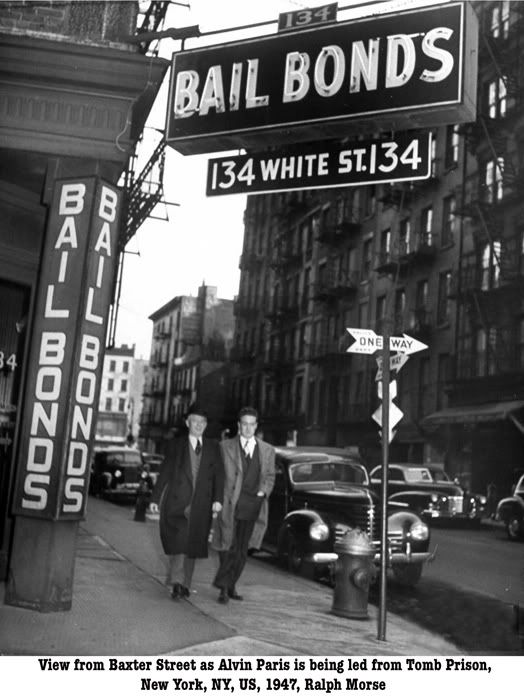
The image is from a previous post about White Street
Cecelia Maruffi helped me discover this. The Criscitello's lived at 134 White Street.
Michael's obituary
CRISCITELLO-Michael, died of heart failure on Monday, September 13, 1999. He was 84 years old. Michael lived on the Lower East Side his entire life. He served in the Marines during World War II and fought in the Battle of Guadalcanal. He received an honorable discharge from the Marines as Sergeant on October 31, 1945. Michael worked for 54 years for the New York Times. He is survived by his wife, Lucy; his daughters, Constance Pradelli and Rae Ann Michele, and four grandchildren, Carl, Michele, Michael and Lucille.from Michael's daughter Connie
Great article. My Dad served sixth marines, 15th artillery regiment. He passed away 15 years ago. I've been watching the new series on the History Channel about WWII...very well done. They showed some rare footage that has never been seen before. I find myself searching images for my father's face, but you know the pictures from WWII are old, grainy and all the soldiers basically look the same. Again, great article Thanks.
Robert Leckie: Who's Almost Who In KV History 2
Leonard Lopate's interview with Hugh Ambrose on 4/13/10
Hugh Ambrose tells the story of the intertwined lives of four U.S. Marines and a U.S. Navy carrier pilot during World War II. His book The Pacific, companion to the HBO miniseries, the real-life stories of men who fought in the Pacific--from Bataan, Midway, and Guadalcanal to Peleliu, Iwo Jima, and Okinawa to the survivors’ return home.
Robert Leckie: Who's Almost Who In KV History
Leckie worked at the Journal American. He walked the streets of the 4th Ward.
his bio
Robert Leckie (December 18, 1920 – December 24, 2001) was an American author of popular books on the military history of the United States. As a young man, he served in the Marine Corps with the 1st Marine Division during World War II. His experiences as a machine gunner and intelligence scout during the Battle of Guadalcanal and later campaigns are said to have greatly influenced his writing.
Leckie was born in Philadelphia, Pennsylvania on December 18, 1920 to an Irish Catholic family of eight children. He grew up in Rutherford, New Jersey. He began his professional writing career, before World War II, at age 16 as a sports writer for The Record of Hackensack in Hackensack.
In 1941, the day after the attack on Pearl Harbor, Leckie enlisted in the United States Marine Corps. He served in combat in the Pacific theater, as a scout and a machine gunner in the 1st Marine Division. He participated in every major 1st Marine Division campaign except Okinawa. Robert Leckie was wounded by blast concussion on Peleliu and evacuated, ending his combat tenure.
Following World War II, Leckie worked as a reporter for the Associated Press, the Buffalo Courier-Express, the New York Journal American, the New York Daily News and The Star-Ledger. His first and best-selling book, Helmet for My Pillow, a personal war memoir, was published in 1957.[3] Leckie subsequently wrote more than 40 books on American war history, spanning from the French and Indian War (1754–1763) to Desert Storm (1991). Robert Leckie died in 2001 after fighting a long battle with Alzheimer's Disease.
Leckie's war memoirs, Helmet for My Pillow, along with Eugene B. Sledge's book With the Old Breed, formed the basis for the 2010 HBO series The Pacific, the successor to Band of Brothers. He was portrayed in the miniseries by James Badge Dale.
172 Henry Street
172 Henry Street
A lower east side elementary school student asked me to research the building he currently lives in. A while ago I took some photos of some of the interesting architectural elements of 172 Henry and the surrounding buildings.
A lower east side elementary school student asked me to research the building he currently lives in. A while ago I took some photos of some of the interesting architectural elements of 172 Henry and the surrounding buildings.
KVer John Palumbo On As The World Turns
He has recurring role as Crowe.
"The major's looking out for his cash. Never mind the who's."
Monday, April 12, 2010
Sunday, April 11, 2010
The Native Peoples Of Lower Manhattan
above image and information below are from Eric Ferrara at the the lower east side history project
Gentrification? The native peoples of Lower Manhattan
Native American peoples inhabited the New York City area for a thousand years before America was "discovered" by Christopher Columbus.
These people were the Lenape tribes of Algonquin lineage, who were considered to be the "grandfathers" of all the various Algonquin-speaking tribes. It was Lenape canoes that met Verrazano in NY Harbor during the very first recorded contact with Europeans in 1524.
The complicated Native American social structure is easier to identify and group by language-spoken rather than by "tribe," but for the sake of this article, I will lazily associate each group as "tribe" anyway. :)
The Native peoples of early Manhattan island hunted big game like Moose and deer, and harpooned bottlehead whales off the shores. They grew maize and trapped small game like beaver. Since nature was sacred to the Lenape, who believed animals held spiritual significance, not one bit of their game was wasted. Pelts, bones, and meat were used in every way possible. In fact the Dutch were impressed by the minimal footprint the Lenape left after living here for hundreds of years. Nothing was destroyed that was not necessary for survival or ritual.
According to Dutch accounts, "The environment was pristine. The air smelled unusually sweet and dry, and schools of playful dolphins escorted ships into the harbor. The air was so filled with birds that sometimes you could hardly hear a conversation."
Large settlements of Native Americans sprouted up at strategic locations along today's Hudson and East River banks. The streets we call the Bowery and 4th Avenue today were the exact route the natives used to travel North and South and Astor Place was a sacred meeting place called "Kintecoying" (meaning "Crossroads of Three Nations").
It was here at Astor Place, or Kintecoying (see map, right), that these three diverse sects of Lenape met around a tall oak tree, a sacred symbol to the people of the day, and told stories of ancient tradition and held spiritual ceremonies. This is where the tribes would share important news and information from around the territories, where tribal councils were set up to decide disagreements, and where valuable goods were traded.
The closest tribe to Kintecoying was the Renneiu-speaking Canarsie tribes, who predominantly settled on the east side of the Bowery, with two major Villages: Shempoes, which was located between modern day 10th to 14th Streets along 2nd Avenue; and Rechtanck, located on the coast around modern day Clinton and Montgomery streets.
To the West of the Bowery were the Unami-speaking Sapohannikan tribes. Their territory was approximately between today's W.14th Street and Canal streets, with their main village, Sapohannikan, established along the coast of the Hudson River approximately where Horatio and Greenwhich streets sit today. And North of today's Union Square were the Munsee speaking Lenape tribes.
The trail from Shempoes Village started about where St. Marks Church sits today and cut straight through 9th Street and St. Marks Place, then West into Astor Place.
The Sapohannikan trail originated around Horatio Street heading North to 13th Street before essentially following Greenwich Avenue all the way to Washington Square Park -- which the path cut straight through -- before heading East again to Astor Place.
The Lenape were not helpless people; Manhattan island was a thriving center of agriculture and commerce; The Canarsie had set up shipping routes to export local goods as early as 1300 AD, 300 years before the first Europeans settled New Amsterdam.
To put it in perspective, once the Dutch arrived for good in 1613, there were about 15,000 Lenape inhabiting the area. It took only a few short years before most of Manhattan island's natural resources were exhausted and the native people were wiped or forced out. By 1700, less than 200 Lenape remained.
I can only imagine the nerve of guys like Columbus, Verrazano, et al. Think about it. That is like you or I driving into a small town upstate, setting up a shop a main street, telling the locals they now live in "Joe town," then inviting all of our friends from the city to join us. (Oh, then we negotiate deals with neighboring towns to kill all of the locals so there is no opposition. Then we kill the people who helped us because we need to expand to accommodate more of our friends.)
Want to talk about gentrification?
The Last Of The Mohicans
Last Mohicans 1
a link to marvel's teacher's guide
The Mohicans were related to the Lenape Indians who inhabited Manhattan prior to the arrival of the Dutch. About the Mohicans
a link to marvel's teacher's guide
The Mohicans were related to the Lenape Indians who inhabited Manhattan prior to the arrival of the Dutch. About the Mohicans
The Mahicans (also Mohicans) are an Eastern Algonquian Native American tribe, originally settling in the Hudson River Valley (around Albany, NY). After 1680, many moved to Stockbridge, Massachusetts. During the early 1820s and 1830s, most of the remaining descendants migrated westward to northeastern Wisconsin. The tribe's name for itself (autonym) was Muhhekunneuw, or "People of the River." Their current name is the name applied to the Wolf Clan division of the tribe, from the Mahican manhigan.
The Mahican were living in and around the Hudson Valley at the time of their first contact with Europeans in 1609, who were mostly Dutch. Over the next hundred years, tensions between the Mahican and the Iroquois Mohawk, as well as Dutch and English settlers, caused the Mahican to migrate eastward across the Hudson River into western Massachusetts and Connecticut. Many settled in the town of Stockbridge, Massachusetts, where they became known as the Stockbridge Indians.
The Stockbridge Indians allowed Protestant Christian missionaries, including Jonathan Edwards, to live among them. In the 18th century, many converted to Christianity, while keeping certain traditions of their own. Although they fought on the side of the American colonists in both the French and Indian War (North American part of the Seven Years' War) and the American Revolution, citizens of the new United States forced them off their land and westward. First the Stockbridge settled in the 1780s at New Stockbridge, New York, on land allocated by the Oneida, of the Iroquois Confederacy.
In the 1820s and 1830s, most of the Stockbridge moved to Shawano County, Wisconsin, where they were promised land by the US government. In Wisconsin, they settled on reservations with the Munsee. Together, the two formed a band jointly known as Stockbridge-Munsee. Today the reservation is known as that of the Stockbridge-Munsee Band of Mohican Indians (Stockbridge-Munsee Community).
Moravian Church missionaries from Bethlehem in present-day Pennsylvania founded a mission at the Mahican village of Shekomeko in Dutchess County, New York. They wanted to bring the Native Americans to Christianity. Gradually they were successful in their efforts, converting the first Christian Indian congregation in the United States. They built a chapel for the people in 1743. They also diligently defended the Mahican against European settlers' exploitation, trying to protect them against land encroachment and abuses of liquor. Some who opposed their work accused them of being secret Catholic Jesuits (who had been outlawed from the colony in 1700) and of working with the Indians on the side of the French. The missionaries were summoned more than once before colonial government, but also had supporters. Finally the colonial government at Poughkeepsie expelled the missionaries from New York in the late 1740s. Settlers soon took over the Mahican land.
The now extinct Mahican language belonged to the Eastern Algonquian branch of the Algonquian language family. It was an Algonquian N-dialect, as were Massachusett and Wampanoag. In many ways, it was more similar to, and just as easily considered one, of the L-dialects, such as that of the Lenape.
Labels:
comics,
native americans,
revolutionary war era
Subscribe to:
Posts (Atom)


